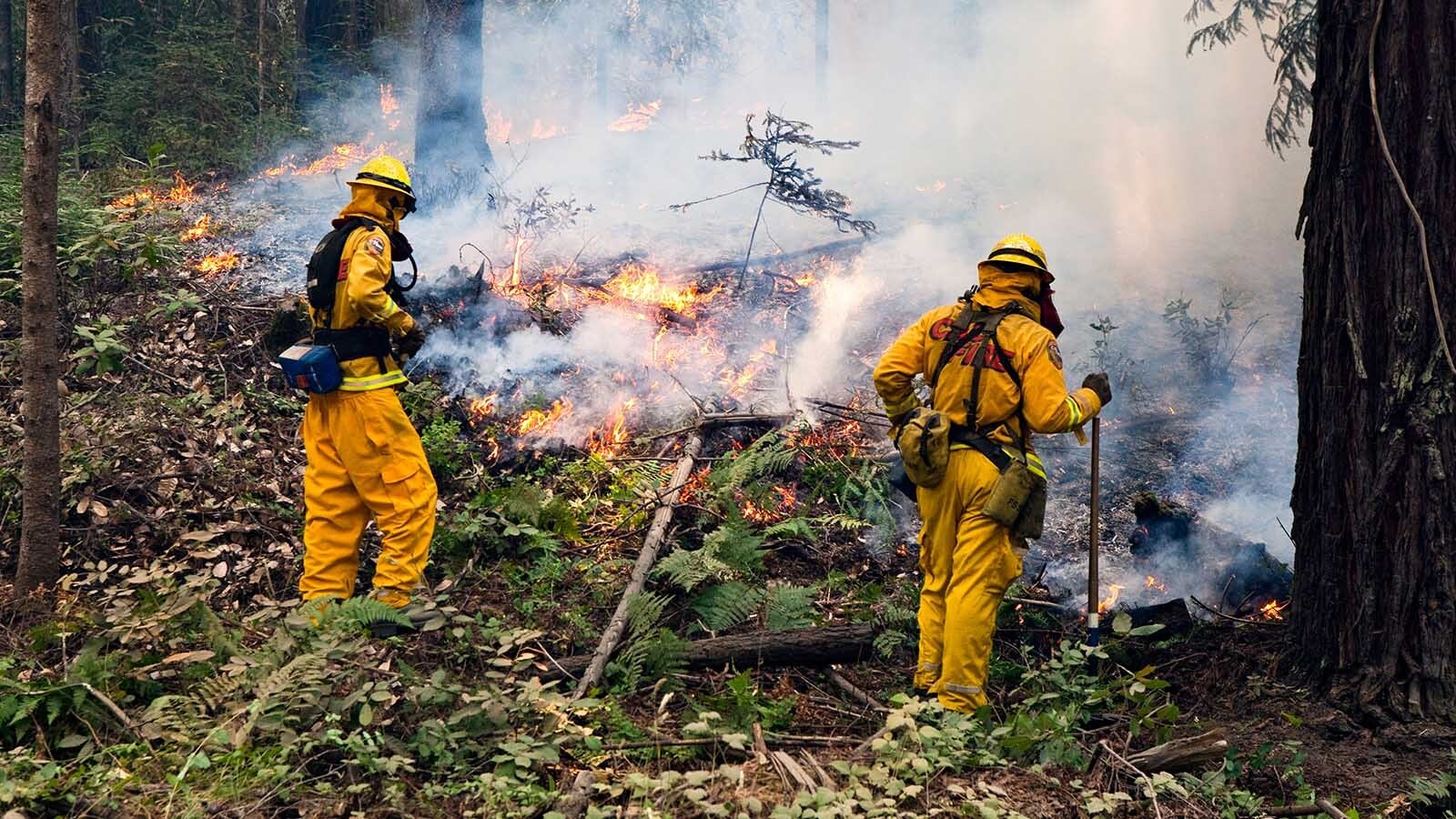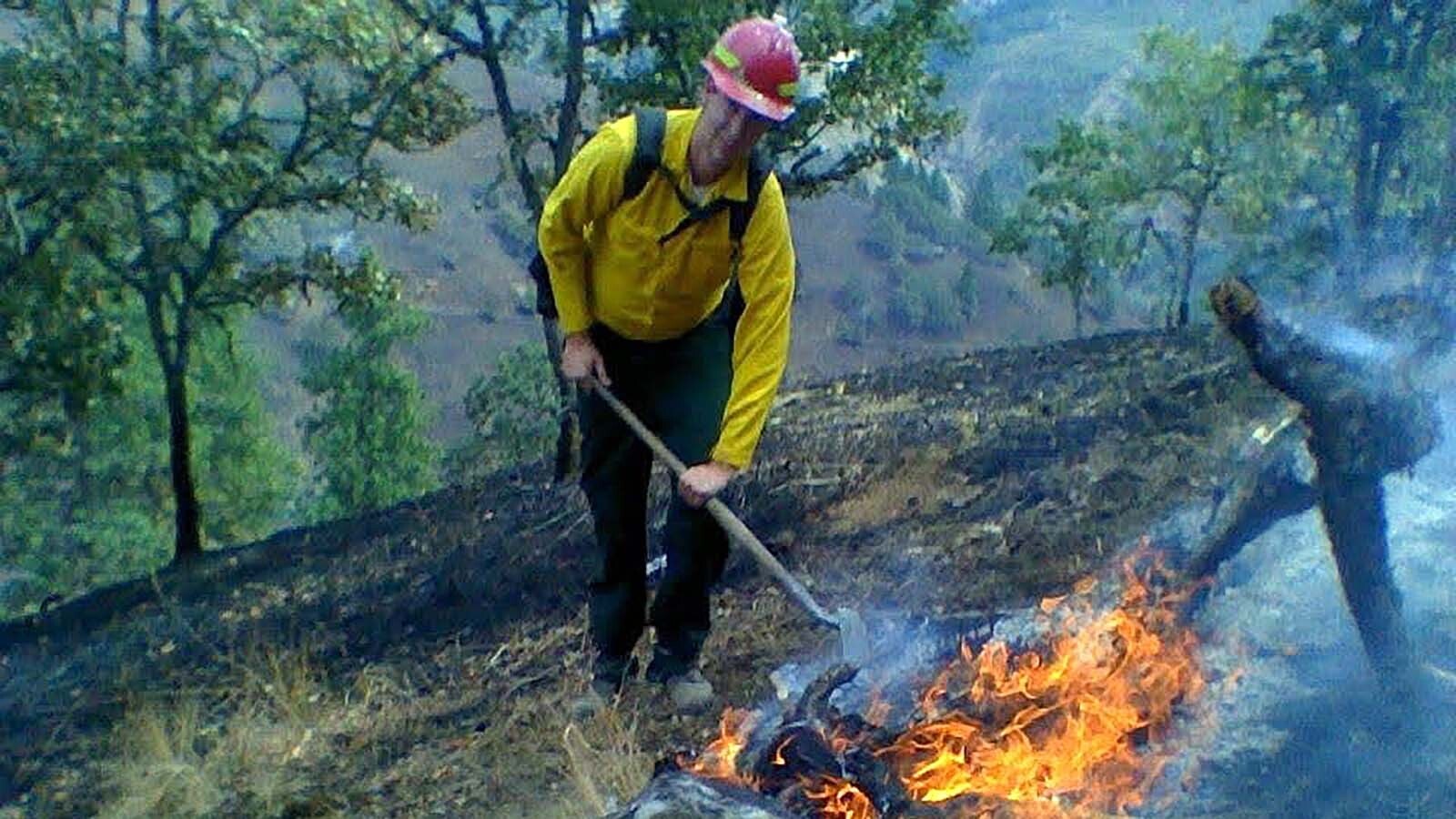The U.S. Forest Service this week lifted a decades-long ban on wildland firefighters wearing masks, announcing that it has stockpiled 80,000 N95 masks and is encouraging firefighters to wear them.
That’s a move in the right direction, said Darren Clifford, 42, of Lander, a former wildland firefighter who was forced into early retirement because of lung damage from smoke inhalation.
However, those disposable N95 masks might not cut it, he told Cowboy State Daily.
Sweat could make masks like the N95 “soggy” and render them ineffective, he said. Or they might get damaged or dirty from being crammed into pockets and packs.
Instead, he advocates for sturdier protective gear, such as the Barriaire Gold Particulate mask, with built-in filtration systems.
Those are pricey, going for about $80 each, but they also can last about three years, Clifford said.
And while there’s nothing that will completely eliminate the possibility of lung damage, masks with heavy-duty filtration systems will significantly cut the risk, so they’re worth the money, he said.
He wishes he could have worn such a mask during his active firefighting career, in several Western and northwestern states.
Clifford has COPD, and doctors tell him that he’ll eventually need a lung transplant.
From Bandannas To Masks
Before the Forest Service’s lifted the mask ban, firefighters were allowed to wear only bandanas over their faces.
The agency banned masks under the reasoning that they would be too cumbersome, and would cause firefighters to overheat, hampering their capability.
And weakened firefighters would in turn increase the risks to their crewmates.
However, as evidence mounted that smoke inhalation was causing firefighters to fall ill with lung cancer, COPD and other ailments, the agency reversed its policy.
Firefighters can now wear masks if they choose, although the agency doesn’t mandate it.
During a brief telephone conversation on Friday, wildland firefighter Cody Norton — who is on the Dollar Fire near Pinedale — said he hadn’t decided whether he’ll start masking up.

Overcoming The Mask Stigma
Masks and respirators are considered standard equipment among city and town firefighters, because of chemicals and other toxic substances that could be present in structure fires.
Wildland firefighters have a different culture, Darren said. Among some of them, there’s a stigma against wearing masks.
“It’s an ego thing,” he said.
The mentality is that “you should be tough. You should be rough, you should be able to deal with it,” he added.
However, as Clifford sees it, just because they aren’t rushing into buildings where the smoke might be laden with chemicals, wildland firefighters shouldn’t think that the smoke they're sucking in isn’t also dangerous.
He thinks fighting fires in areas full of poison oak might have caused the worst damage to his lungs.
“When poison oak burns, the smoke really tears up your lungs,” he said.
Moreover, wildland firefighters can’t take for granted that they’ll never have to deal with nasty chemicals.
There are “meth labs and marijuana farms” scattered all over the national forests, and when they go up in flames, it creates highly toxic smoke, he said.
Clifford said masks probably can’t be worn all the time. When firefighters are engaged highly strenuous tasks, such as clambering up a steep slope, masks could cause overheating, he said.
However, when doing such things as mopping up a fire, it would be wise to mask up, he said.
“That’s when you get lots of soot,” he said.
Mark Heinz can be reached at mark@cowboystatedaily.com.








